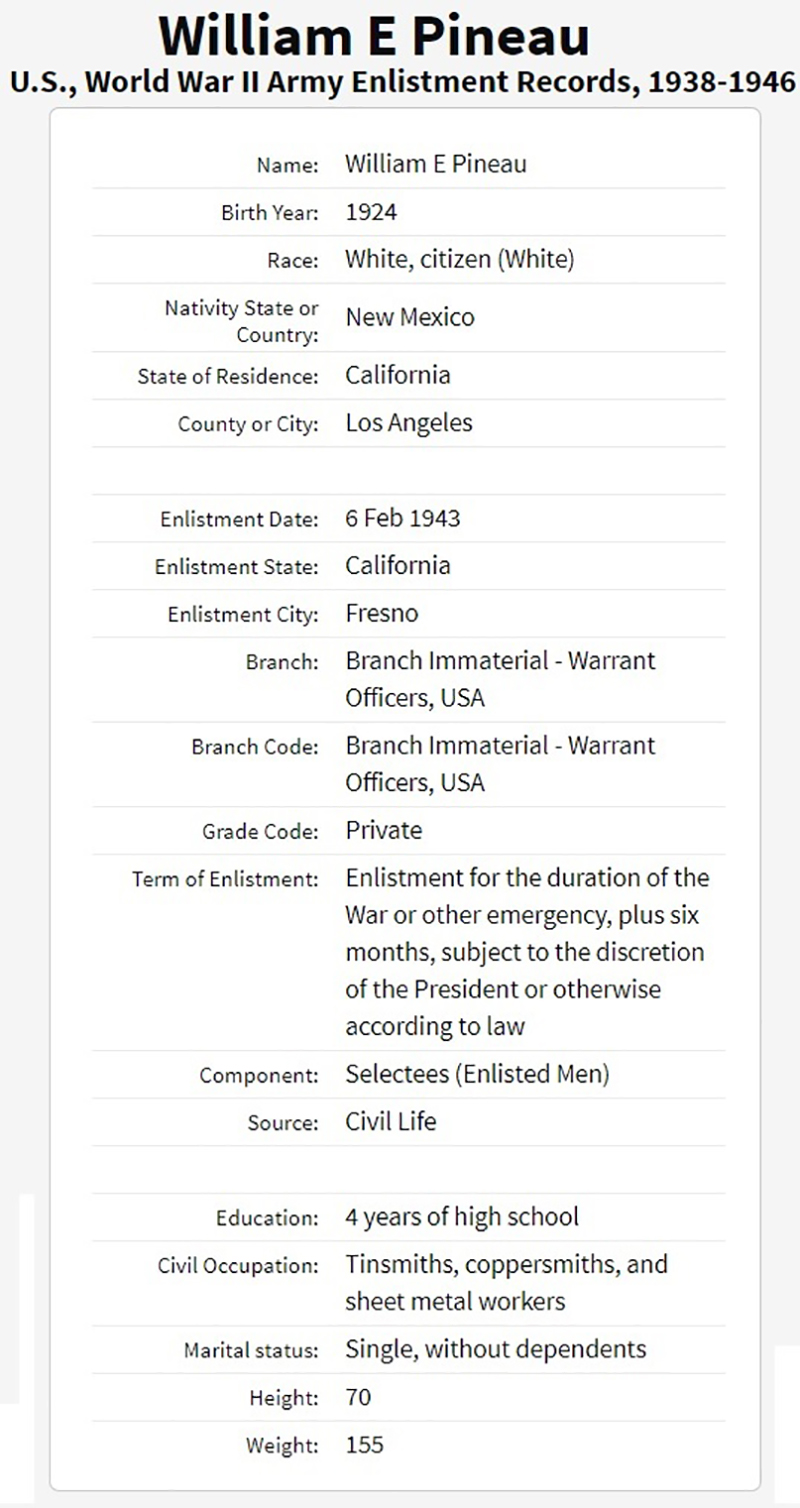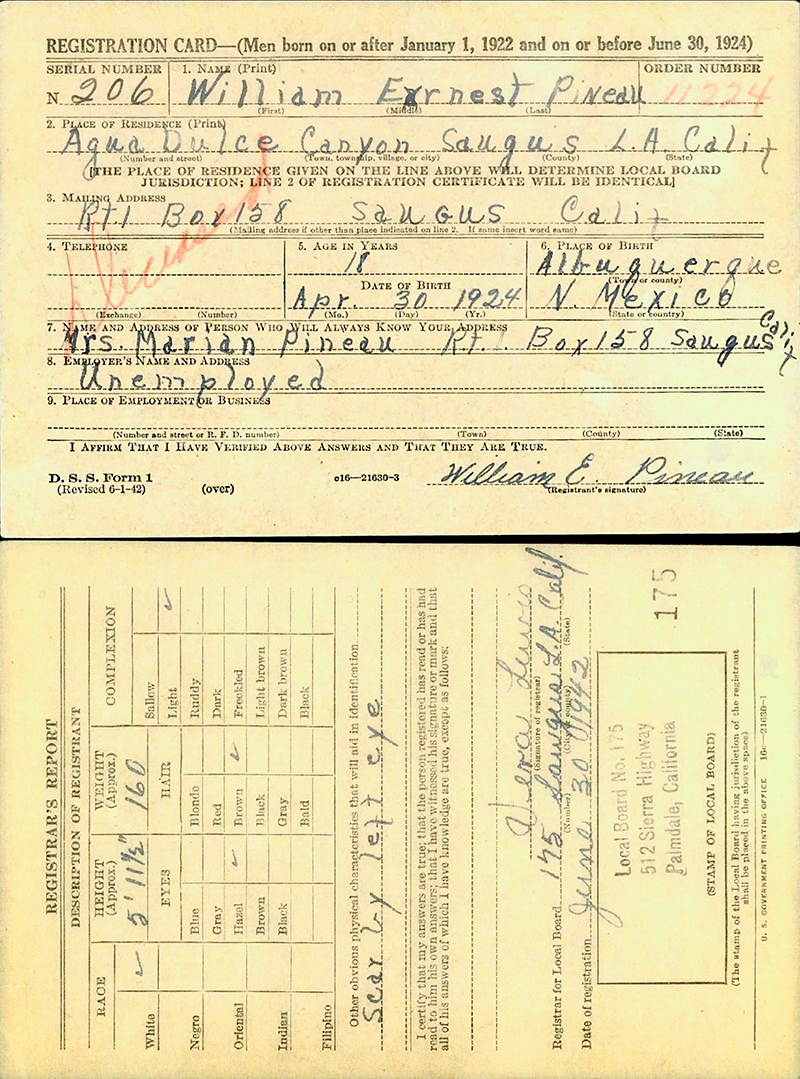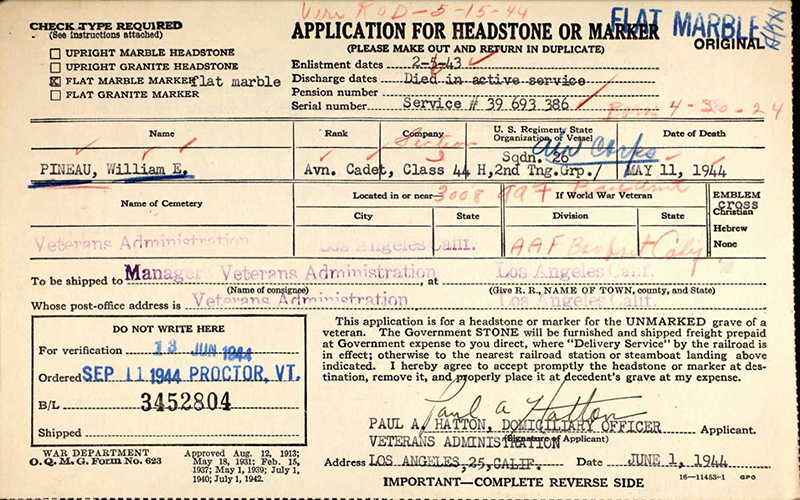|
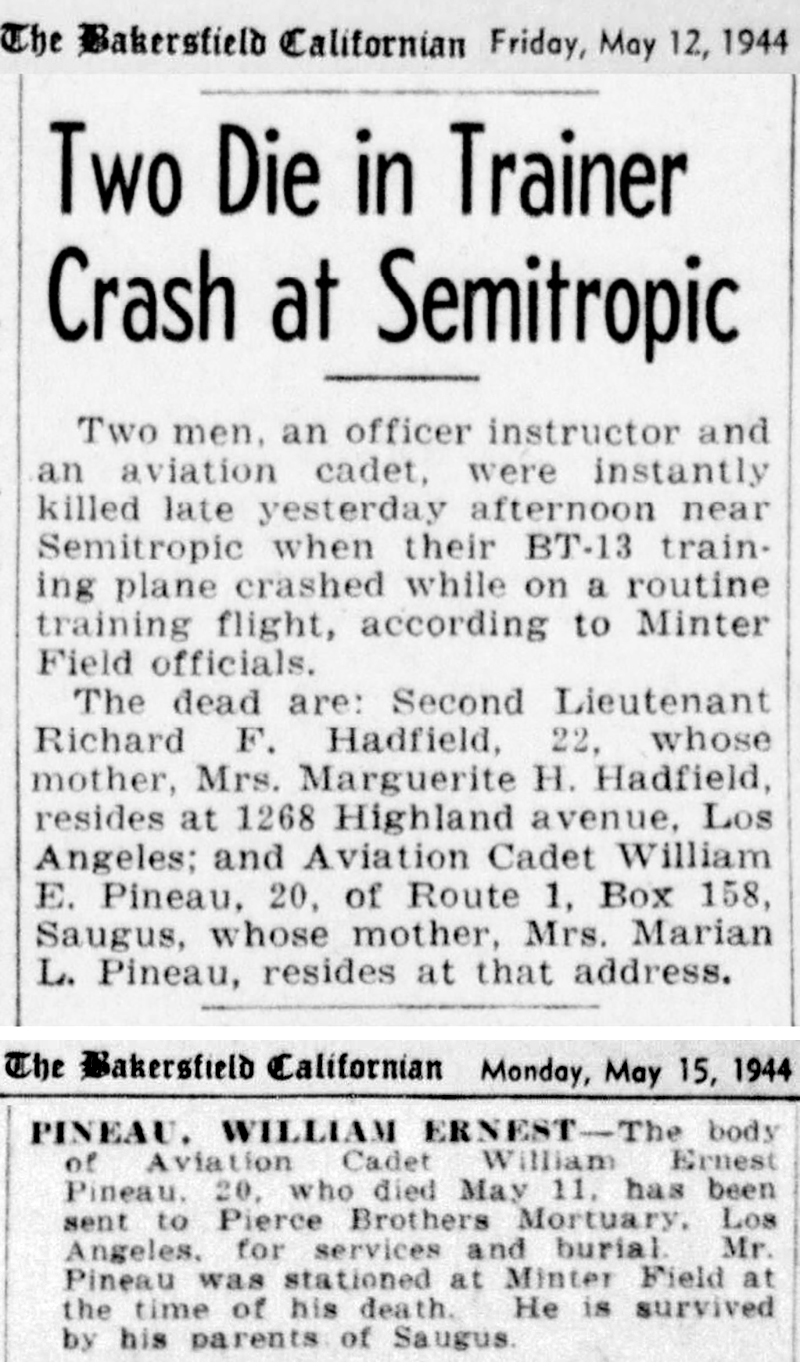
Click to enlarge.
|
Cadet William Ernest Pineau was born in Albuquerque on April 30, 1924, to Ernest L. Pineau (1889-1976, originally from Pennsylvania) and Marian L. Miller Pineau (1897-1973, from Iowa). In 1935 the family lived in Oregon; by 1940, when William was 15, they were living in Agua Dulce Canyon along with William's maternal grandparents. At the time, his father was working as a house painter. According to the 1940 U.S. Census, their nearest neighbors were the Earl Held, Frank Mitchell and George Shaefer families.
William registered for the draft June 30, 1942, two months after his 18th birthday. Unmarried, he enlisted in the U.S. Army on February 6, 1943, at Fresno, and was sent to Air Corps training at Minter Field (previously called Lerdo Field, later known as Shafter Airport) in farm country northwest of Bakersfield.
William had just turned 20 when on May 11, 1944, during a training mission out of Minter Field, his BT-13 aircraft went down in Semitropic, a small community northwest of Shafter (between today's Interstate 5 freeway and Wasco on Highway 46). William perished along with the copilot, 2LT Richard F. Hadfield, 22, of Hollywood. Having died in active service, William was buried in Los Angeles National Cemetery beneath a government-issue headstone.
Almost every U.S. pilot, both Army and Navy, learned his basic flying skills in the BT-13.[1] "BT" stands for Basic Trainer. The BT-13 was the Vultee Valiant, a single-engine, all-metal cantilever low-wing aircraft with fixed landing gear built by Vultee Aircraft of Downey, Calif. It had a range of 725 miles and a maximum speed of 230 mph. A total of 11,537 Valiants were produced from September 1939 to the summer of 1944. Pilots nicknamed it the "Vultee Vibrator." Aircraft at Minter Field had the fuselage letter code "L" for Lerdo Field.[2] ("M" was Moffett Field in Santa Clara County.)
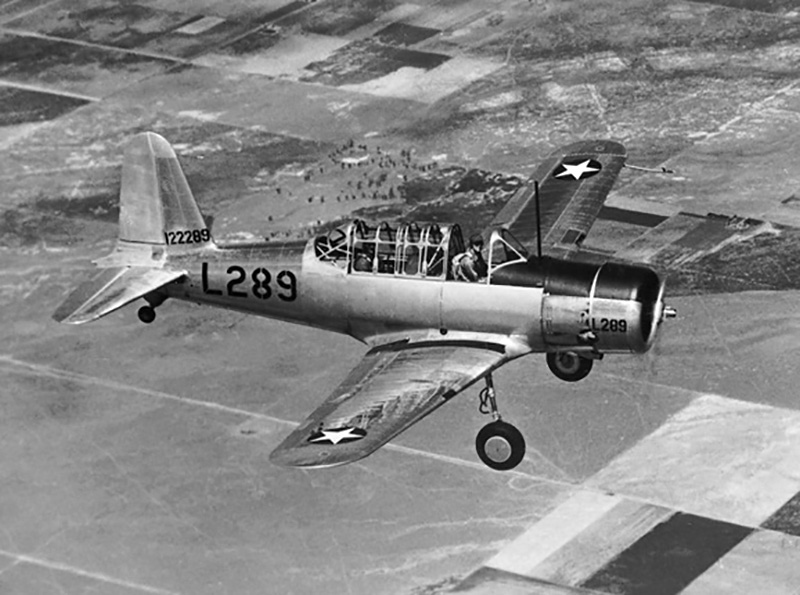
Example of a BT-13 trainer at Minter Field. (Not Cadet Pineau's plane.) Note the "L" on the fuselage for Lerdo Field, aka Minter Field. Click to enlarge.
|
In 1945, William's father, Ernest Pineau, made Newsweek magazine when he was the target of the "Phantom of Vasquez Rocks." (Read about it here.) At that time, Ernest was reportedly working as a "government trapper of mountain lions and coyotes." In 1948, William's mother, Marian Pineau, was identified as the "former owner of the Agua Dulce Club."
1. Western Museum of Flight (wmof.com).
2. USAAF Training Aircraft Fuselage Codes of WWII (fuselagecodes.com).
Research assistance from Tricia Lemon Putnam.
|

